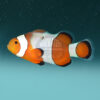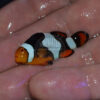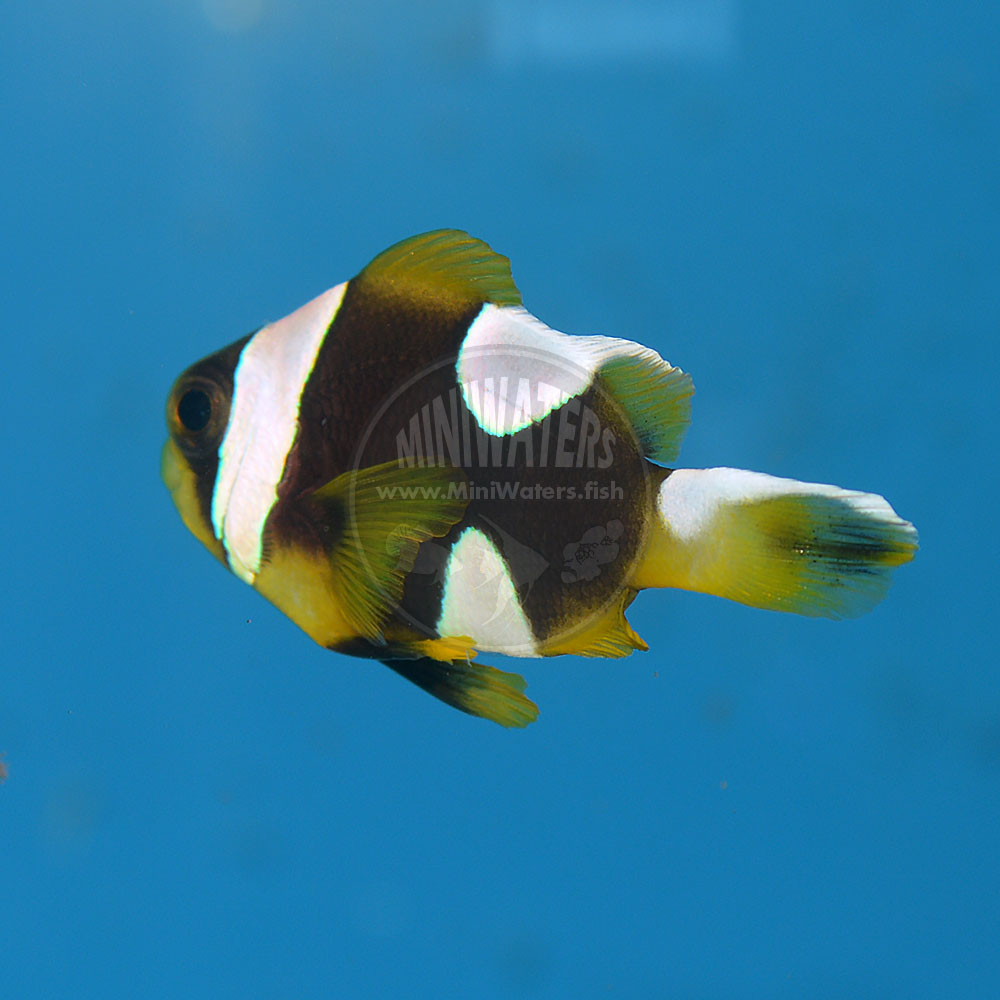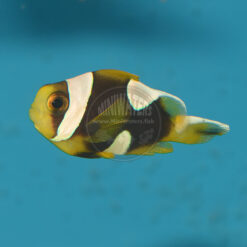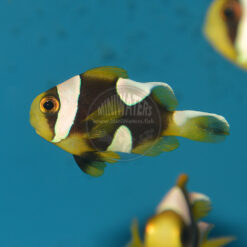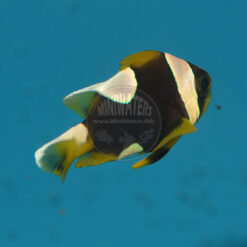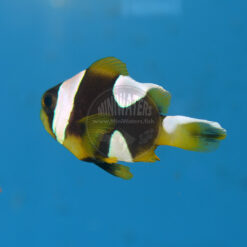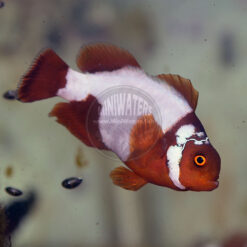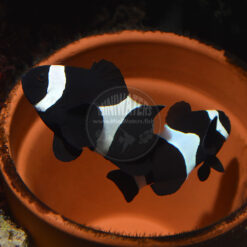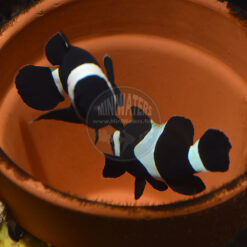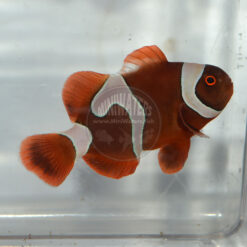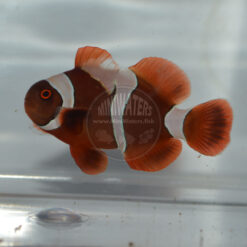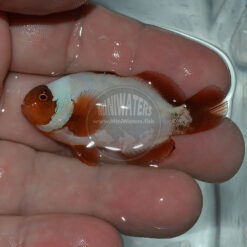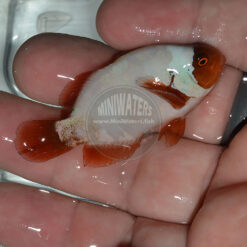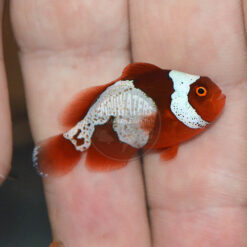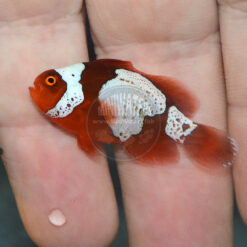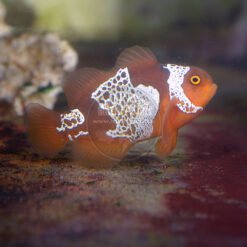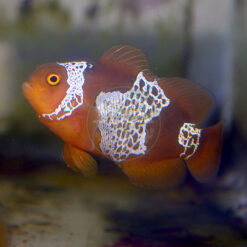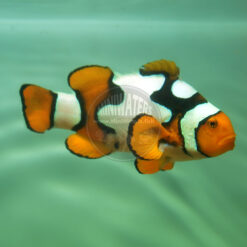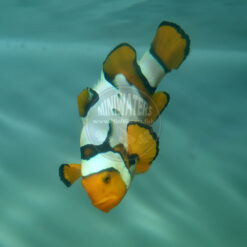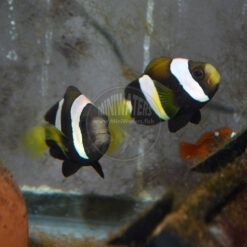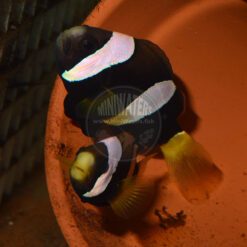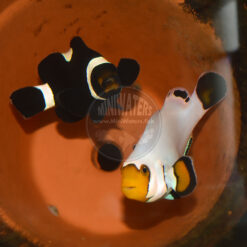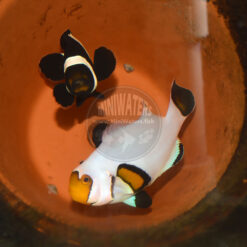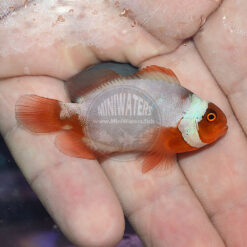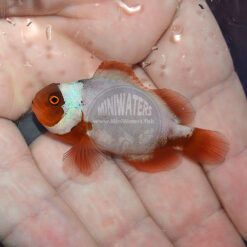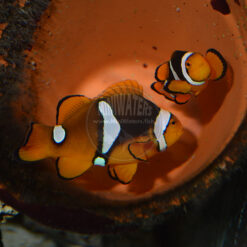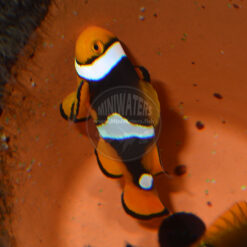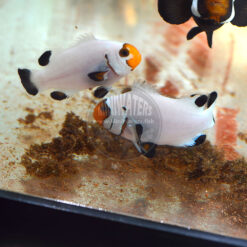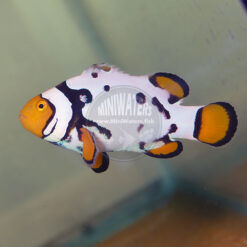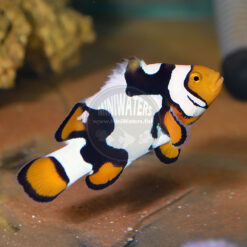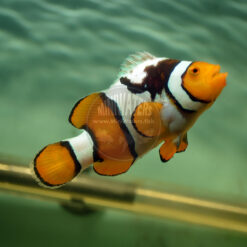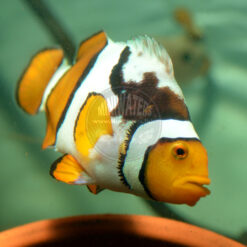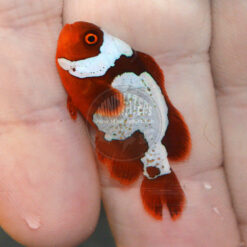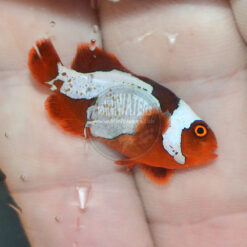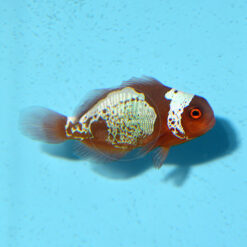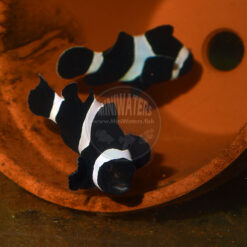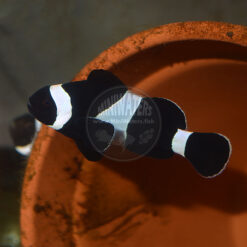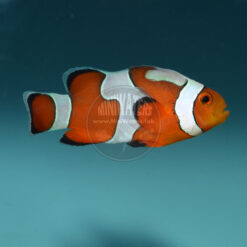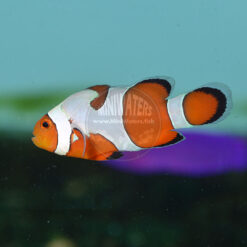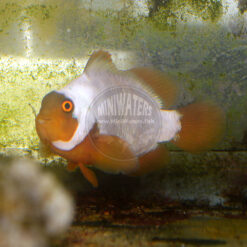Amphiprion latifasciatus “Madagascar Clownfish” MISBAR 1-22-16 WYSIWYG
Original price was: $89.00.$20.00Current price is: $20.00.
This is a WYSIWYG offering. This is the EXACT fish being offered. It is a very dark misbar from Ross DeAngelis’ broodstock pair. F1. To me, the fish looks like it has just a little too flat a face for my tastes. So between that and the misbar, this is a FIRE SALE for someone looking for genetic raw material. Want this paired with an unrelated F1 Latifasciatus from Sustainable Aquatics? Please inquire.
The Madagascar Clownfish, Amphiprion latifasciatus, has been an industry rarity for decades, with wild caught fish retailing for hundreds or even thousands of dollars. This species is frequently confused with some of the Clark’s Clownfish varities (Amphiprion clarkii), although it can be told apart by the median stripe (mid-stripe) as an adult, where this species has large scales that give the stripe a somewhat “pearled” effect. Juvenile In addition to wide bars, the Madagascar Clownfish is best known for it’s large, usually solid yellow lyretail. As a juvenile, the fins tend to be dark, which can cause some additional confusion with sibling species such as Allard’s Clownfish (A. allardi) and others. Therefore, trusting your source when purchasing this species is important to ensure you get the right fish.
There are potentially multiple regional color variants of the Madagascar Clownfish, although they are currently up for debate. All the captive broodstock we are aware of represent adults which have solid yellow tails (caudal fins), so the same would be expected for the offspring as they mature. At this time, no further geographic provenance is known for the foundation population.
Captive Bred Madagascar Clownfish only became a reality late 2014, with first availability in summer 2015 through private breeder Ross DeAngelis. In the fall of 2015, Sustainable Aquatics introduced their own lines of captive-bred Madagascar Clownfish at a significantly lower price point than the availability through DeAngelis. Looking towards the next generation of breeding, maintaining the much rarer DeAngelis line, and using offspring from Sustainable Aquatic’s production for outcrossing, present a unique opportunity for this species to finally become an aquarium staple while also practicing solid genetic maintenance; having offspring from only one foundation pair is generally deemed insufficient for genetic maintenance of a species in captivity over the long haul, and with wild fish presumably still fetching hundreds or thousands of dollars during the rare times they are available, bringing in additional genetics from the wild may prove difficult and costly.
Sold Out



